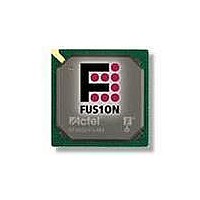AFS600-PQG208 Actel, AFS600-PQG208 Datasheet - Page 18

AFS600-PQG208
Manufacturer Part Number
AFS600-PQG208
Description
FPGA - Field Programmable Gate Array 600K System Gates
Manufacturer
Actel
Datasheet
1.AFS600-PQG208.pdf
(330 pages)
Specifications of AFS600-PQG208
Processor Series
AFS600
Core
IP Core
Maximum Operating Frequency
1098.9 MHz
Number Of Programmable I/os
95
Data Ram Size
110592
Supply Voltage (max)
1.575 V
Maximum Operating Temperature
+ 70 C
Minimum Operating Temperature
0 C
Development Tools By Supplier
AFS-Eval-Kit, AFS-BRD600, FlashPro 3, FlashPro Lite, Silicon-Explorer II, Silicon-Sculptor 3, SI-EX-TCA
Mounting Style
SMD/SMT
Supply Voltage (min)
1.425 V
Number Of Gates
600 K
Package / Case
PQFP-208
Lead Free Status / RoHS Status
Lead free / RoHS Compliant
Available stocks
Company
Part Number
Manufacturer
Quantity
Price
Company:
Part Number:
AFS600-PQG208
Manufacturer:
Actel
Quantity:
135
Company:
Part Number:
AFS600-PQG208I
Manufacturer:
Microsemi SoC
Quantity:
10 000
- Current page: 18 of 330
- Download datasheet (13Mb)
Device Architecture
Core Architecture
2 - 2
The system application, Level 3, is the larger user application that utilizes one or more applets.
Designing at the highest level of abstraction supported by the Actel Fusion technology stack, the
application can be easily created in FPGA gates by importing and configuring multiple applets.
In fact, in some cases an entire FPGA system design can be created without any HDL coding.
An optional MCU enables a combination of software and HDL-based design methodologies. The MCU
can be on-chip or off-chip as system requirements dictate. System portioning is very flexible, allowing the
MCU to reside above the applets or to absorb applets, or applets and backbone, if desired.
The Actel Fusion technology stack enables a very flexible design environment. Users can engage in
design across a continuum of abstraction from very low to very high.
VersaTile
Based upon successful Actel ProASIC3/E logic architecture, Fusion devices provide granularity comparable
to gate arrays. The Fusion device core consists of a sea-of-VersaTiles architecture.
As illustrated in
configured using the appropriate flash switch connections:
VersaTiles can flexibly map the logic and sequential gates of a design. The inputs of the VersaTile can
be inverted (allowing bubble pushing), and the output of the tile can connect to high-speed, very-long-line
routing resources. VersaTiles and larger functions are connected with any of the four levels of routing
hierarchy.
When the VersaTile is used as an enable D-flip-flop, the SET/CLR signal is supported by a fourth input,
which can only be routed to the core cell over the VersaNet (global) network.
The output of the VersaTile is F2 when the connection is to the ultra-fast local lines, or YL when the
connection is to the efficient long-line or very-long-line resources
Note:
Figure 2-2 • Fusion Core VersaTile
•
•
•
•
Any 3-input logic function
Latch with clear or set
D-flip-flop with clear or set
Enable D-flip-flop with clear or set (on a 4th input)
*This input can only be connected to the global clock distribution network.
Legend:
Figure
Enable
CLK
CLR
XC*
X2
CLR/
Data
X1
X3
2-2, there are four inputs in a logic VersaTile cell, and each VersaTile can be
Via (hard connection)
0
1
R e vi s i o n 1
0
1
Switch (flash connection)
(Figure
0
1
2-2).
0
1
Ground
Pin 1
Y
F2
YL
Related parts for AFS600-PQG208
Image
Part Number
Description
Manufacturer
Datasheet
Request
R

Part Number:
Description:
AFS600-1FGG256I
Manufacturer:
Actel
Datasheet:

Part Number:
Description:
AFS600-2FGG256I
Manufacturer:
Actel
Datasheet:











